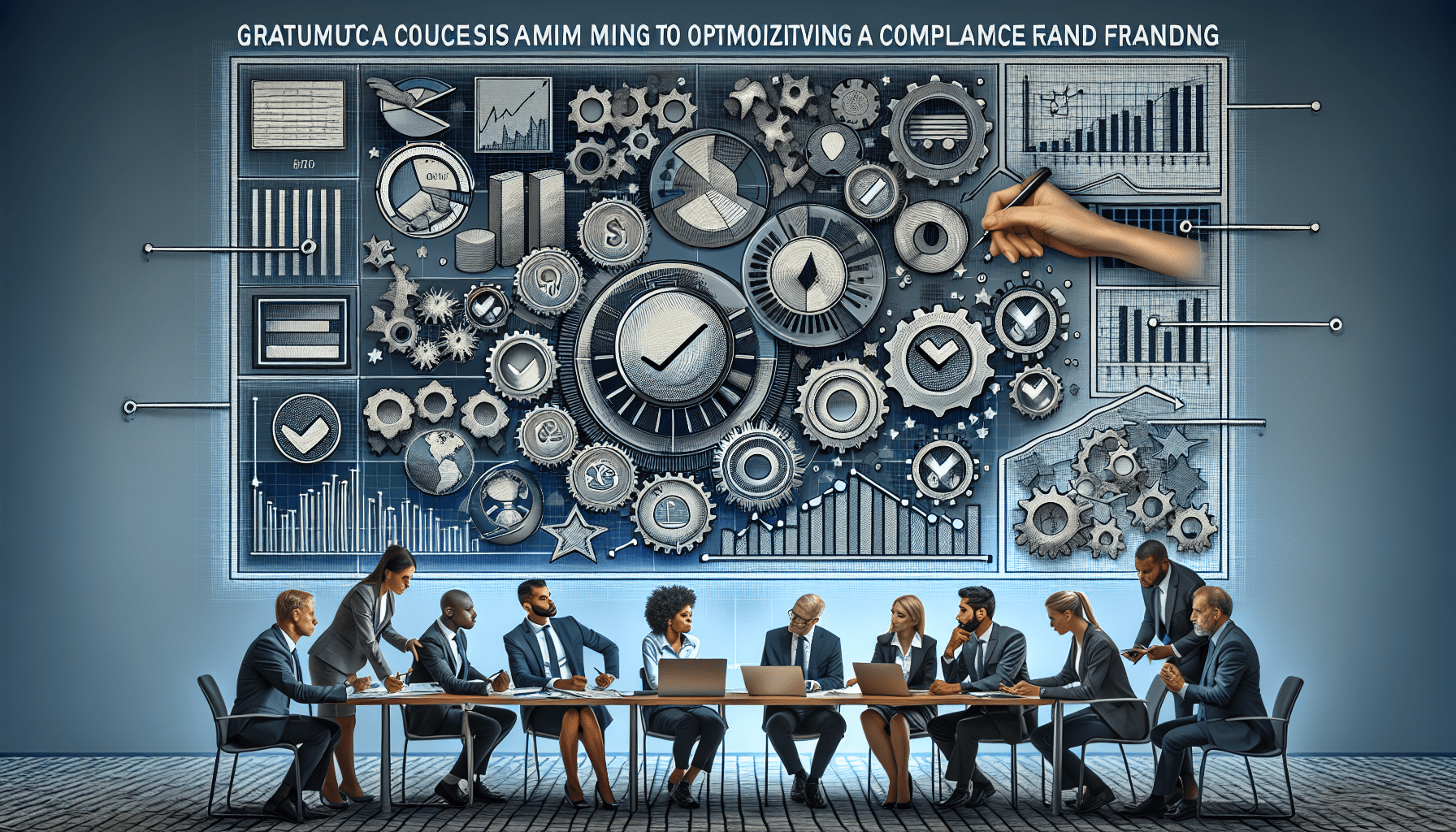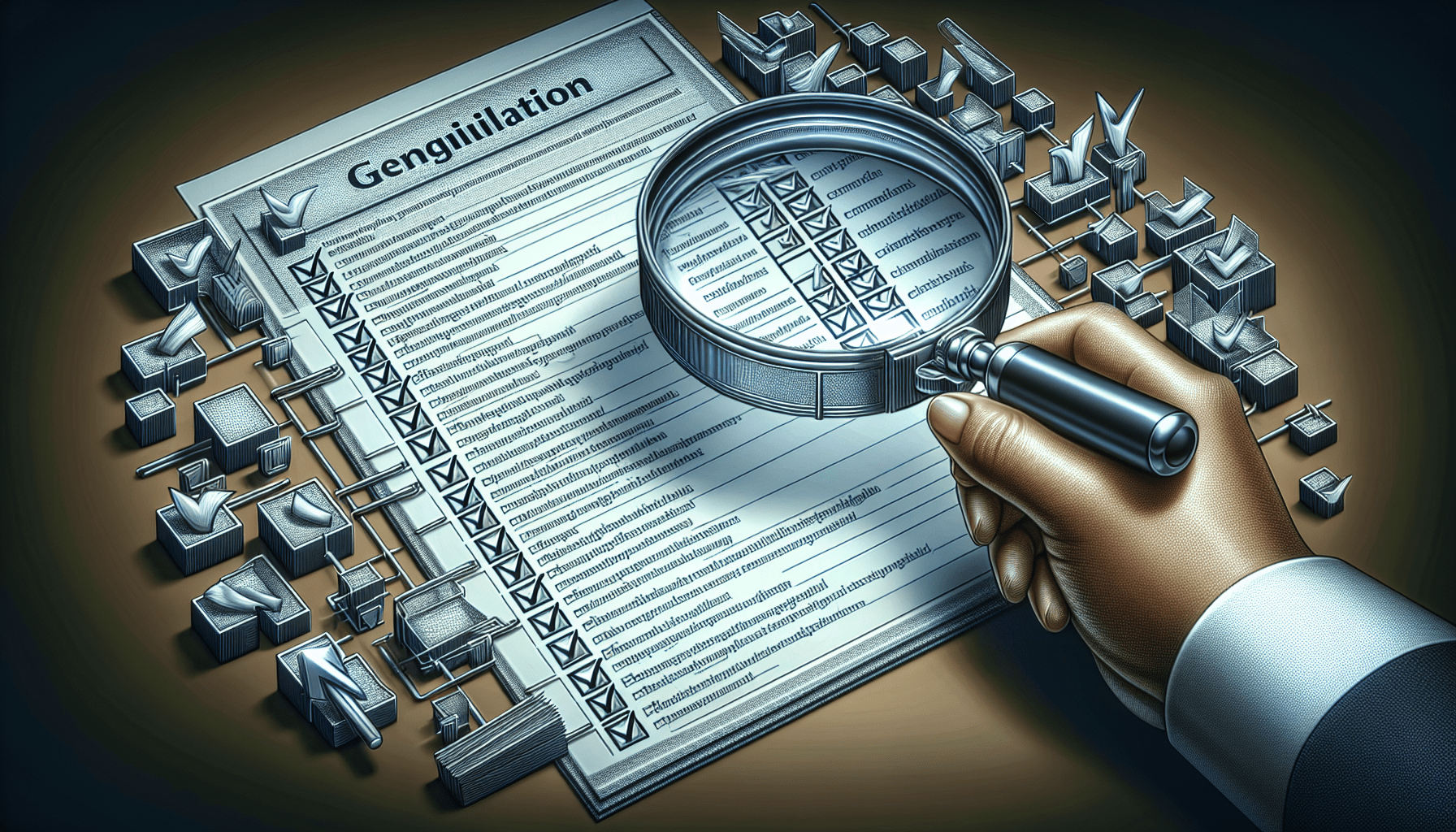In today’s ever-evolving business landscape, ensuring compliance with regulations and industry standards has become more critical than ever. Compliance audits serve as a powerful tool to assess a company’s adherence to these requirements, enabling organizations to identify areas of improvement and minimize potential risks. However, simply conducting compliance audits is not enough. To truly maximize their value, companies must focus on incorporating efficient processes, leveraging technology, and fostering a culture of continuous improvement, ultimately resulting in increased operational efficiency, enhanced risk management, and strengthened stakeholder trust.

Understanding Compliance Audits
Compliance audits are systematic and independent examinations of an organization’s policies, processes, and operations to ensure adherence to applicable laws, regulations, and industry standards. These audits aim to assess the organization’s level of compliance with legal requirements and identify any areas of non-compliance that need to be addressed. Compliance audits play a critical role in ensuring that organizations operate ethically, maintain regulatory compliance, and mitigate potential risks.
Definition of Compliance Audits
Compliance audits can be defined as comprehensive evaluations of an organization’s compliance with relevant laws, regulations, industry standards, and internal policies. These audits are typically conducted by internal audit departments, external auditors, or regulatory bodies to assess the organization’s adherence to legal and regulatory requirements, identify any deviations or gaps, and recommend corrective actions.
Importance of Compliance Audits
Compliance audits hold immense importance for organizations across various industries. By conducting these audits, organizations can:
-
Ensure Legal Compliance: Compliance audits help organizations stay in line with applicable laws, regulations, and industry standards. By identifying and addressing non-compliance issues, organizations can mitigate legal risks and avoid penalties, fines, or legal consequences.
-
Safeguard Reputation: Compliance breaches can tarnish an organization’s reputation and erode stakeholder trust. Conducting regular compliance audits instills confidence in stakeholders, demonstrating the organization’s commitment to ethical practices and regulatory compliance.
-
Mitigate Financial Risks: Non-compliance can result in financial losses due to penalties, litigation expenses, and damaged customer relationships. Compliance audits help identify areas of financial risks and allow organizations to implement appropriate controls and measures to mitigate potential losses.
-
Enhance Operational Efficiency: Compliance audits enable organizations to identify operational inefficiencies and improve their processes. By evaluating compliance-related workflows and controls, organizations can optimize their operations and enhance overall efficiency.
-
Foster a Culture of Compliance: Regular compliance audits communicate the importance of ethical conduct and regulatory compliance within an organization. By promoting a culture of compliance, organizations encourage employees to adhere to internal policies and external regulations, reducing the likelihood of compliance breaches.
Objectives of Compliance Audits
The primary objectives of compliance audits are to:
-
Assess Adherence to Laws and Regulations: Compliance audits evaluate the extent to which an organization’s operations are aligned with applicable laws, regulations, and industry standards. This includes assessing compliance with legal, regulatory, financial, data protection, health and safety, and environmental requirements.
-
Identify Areas of Non-Compliance: Compliance audits aim to identify any gaps, weaknesses, or deviations from compliance requirements. By identifying and documenting non-compliance issues, organizations can take corrective actions to address these issues effectively.
-
Evaluate Effectiveness of Internal Controls: Compliance audits assess the effectiveness of an organization’s internal controls and compliance processes. By evaluating controls, organizations can identify areas where controls could be strengthened or improved to enhance compliance practices.
-
Determine the Overall Compliance Status: Compliance audits provide organizations with an overview of their overall compliance status. This includes identifying any patterns or trends in non-compliance, determining the scope and severity of compliance issues, and assessing the organization’s risk exposure.
Preparing for a Compliance Audit
Preparing for a compliance audit is a crucial step in ensuring a smooth and effective auditing process. The following steps should be taken during the preparation phase:
Reviewing Relevant Regulations and Standards
Before an audit, it is essential to review all relevant laws, regulations, industry standards, and internal policies applicable to the organization. This helps the audit team to understand the compliance requirements and ensures that they have the necessary information to assess the organization’s compliance.
Identifying Areas of Non-Compliance
Organizations should conduct a thorough assessment of their existing compliance practices and identify any areas of non-compliance or potential risks. This assessment involves reviewing internal controls, policies, and procedures to identify gaps or weaknesses that may put the organization at risk of non-compliance.
Developing an Audit Plan
A well-defined audit plan is paramount to ensuring a successful compliance audit. The audit plan outlines the scope, objectives, and timeline of the audit, identifies the resources required, and establishes the criteria for evaluating compliance. It also includes a checklist of compliance requirements that need to be assessed during the audit.
Conducting a Compliance Audit
Once the organization is adequately prepared, it is time to conduct the compliance audit itself. The following steps should be followed during this phase:
Forming an Audit Team
The audit team should consist of individuals who are knowledgeable and experienced in compliance matters. This may include internal auditors, subject matter experts, and external consultants. The team should be well-versed in the relevant laws, regulations, and industry standards applicable to the organization.
Gathering Necessary Documentation
During the audit, the audit team will need to gather relevant documentation to evaluate compliance. This may include policies, procedures, contracts, financial records, operational data, and other supporting documentation. The team should ensure that all documentation is properly organized and easily accessible.
Interviewing Employees and Stakeholders
To gain a comprehensive understanding of the organization’s compliance practices, the audit team should conduct interviews with relevant employees and stakeholders. These interviews provide valuable insights into the effectiveness of internal controls, the level of awareness and understanding of compliance requirements, and any challenges or concerns related to compliance.

Evaluating Audit Findings
Once the compliance audit is completed, the audit team will evaluate the findings and assess the organization’s level of compliance. The following steps should be taken during this phase:
Analyzing the Collected Data
The audit team should analyze the data collected during the audit to identify any areas of non-compliance, trends, or patterns. This analysis involves comparing the findings against the established compliance criteria and identifying any deviations or weaknesses.
Identifying Trends and Patterns
By identifying trends and patterns in non-compliance, the audit team can gain deeper insights into the root causes of non-compliance and determine if systemic issues exist within the organization. This allows for more targeted and effective corrective actions.
Assessing the Level of Compliance
Based on the findings of the audit, the audit team will assess the organization’s overall level of compliance. This assessment includes determining the severity and scope of non-compliance issues, evaluating the effectiveness of internal controls and compliance processes, and identifying areas that require immediate attention.
Addressing Non-Compliance Issues
The purpose of a compliance audit is to identify non-compliance issues and recommend corrective actions. The following steps should be taken to address these issues effectively:
Developing Corrective Action Plans
For each non-compliance issue identified, a corrective action plan should be developed. This plan should outline the specific actions required to address the issue, allocate responsibilities to the appropriate individuals or departments, and establish timelines for implementation.
Assigning Responsibility for Implementation
To ensure accountability and effective implementation of corrective actions, clear responsibilities should be assigned to individuals or departments within the organization. Assigning responsibility helps in clearly delineating the tasks and ensuring that the necessary actions are taken to address the non-compliance issues.
Establishing Timelines for Resolution
Timelines should be established for resolving each non-compliance issue identified during the audit. These timelines create a sense of urgency and ensure that corrective actions are taken promptly. Regular monitoring and follow-up should be conducted to ensure timely resolution.
Optimizing Compliance Processes
In addition to addressing non-compliance issues, organizations can optimize their compliance processes to enhance overall efficiency and effectiveness. The following steps should be considered:
Implementing Automation and Technology
Automation and technology can streamline compliance processes and improve accuracy and consistency. By leveraging software solutions, organizations can automate compliance tasks, centralize data management, and generate real-time reports, reducing the time and effort required for compliance activities.
Streamlining Compliance Workflows
Organizations should evaluate their compliance workflows and identify opportunities for streamlining. By eliminating redundant steps, simplifying processes, and implementing standardized procedures, organizations can improve efficiency, reduce errors, and optimize resource allocation.
Improving Communication and Collaboration
Effective communication and collaboration are vital for successful compliance management. Organizations should foster a culture of open communication and collaboration, ensuring that compliance-related information is shared transparently across all levels. This enables timely identification and resolution of compliance issues.
Monitoring and Continuous Improvement
Compliance is an ongoing process, and monitoring should be implemented to ensure that compliance practices are continuously assessed and improved. The following steps should be taken in this regard:
Establishing Monitoring Mechanisms
Organizations should establish mechanisms to monitor compliance on an ongoing basis. This may include regular self-assessments, internal audits, key performance indicators (KPIs), and real-time monitoring tools. Monitoring ensures that organizations stay vigilant and proactive in addressing any emerging compliance issues.
Tracking Progress and Performance
Regular tracking of progress and performance against compliance objectives is essential to gauge the effectiveness of implemented corrective actions. Organizations should establish metrics and benchmarks to measure compliance performance and track progress over time.
Implementing Feedback Loops
To facilitate continuous improvement, organizations should implement feedback loops that allow for the incorporation of insights and suggestions from employees, auditors, stakeholders, and customers. Feedback can help identify areas for process enhancement, address emerging compliance risks, and drive innovation in compliance practices.
Leveraging Audit Data for Business Insights
The data collected during compliance audits can provide valuable business insights beyond compliance management. The following steps can help organizations leverage audit data:
Using Audit Data for Risk Assessment
The findings of compliance audits can serve as valuable inputs for risk assessment and risk management activities. By analyzing audit data, organizations can identify potential risks, determine their impact, and develop strategies to mitigate them effectively.
Identifying Operational Inefficiencies
Compliance audits often highlight operational inefficiencies that can be addressed to improve overall organizational performance. The analysis of audit data may reveal bottlenecks, redundancies, or areas for process improvement, leading to enhanced efficiency and cost savings.
Informing Strategic Decision-Making
Audit data can provide organizations with insights that inform strategic decision-making processes. By understanding compliance trends, emerging risks, and areas of improvement, organizations can align their strategies and allocate resources more effectively.
Engaging with Compliance Auditors
Effective engagement with compliance auditors can greatly enhance the value of compliance audits for organizations. The following steps should be taken to foster a collaborative relationship with auditors:
Building a Collaborative Relationship
Organizations should strive to build a collaborative and cooperative relationship with compliance auditors. Open and transparent communication, mutual respect, and a shared commitment to achieving compliance goals are essential for a positive and productive engagement.
Leveraging Auditor Expertise
Compliance auditors bring valuable expertise and insights to the table. Organizations should take advantage of this expertise by seeking guidance, asking questions, and utilizing the auditor’s knowledge in addressing compliance challenges and improving compliance practices.
Addressing Audit Recommendations
Compliance auditors often provide recommendations and suggestions to improve compliance practices. Organizations should give careful consideration to these recommendations and take proactive steps to address them. Addressing audit recommendations demonstrates a commitment to continuous improvement and adds value to the compliance audit process.
Maximizing the ROI of Compliance Audits
To maximize the return on investment (ROI) of compliance audits, organizations should consider the following strategies:
Developing a Long-Term Compliance Strategy
A long-term compliance strategy provides a roadmap for ongoing compliance activities. It ensures that compliance efforts are aligned with business objectives, addresses emerging risks, and facilitates proactive compliance management.
Investing in Compliance Training and Education
Regular compliance training and education programs are essential for ensuring that employees are aware of compliance requirements and can effectively implement compliance practices. By investing in training and education, organizations can empower employees to become compliance champions.
Seeking External Benchmarking and Certifications
External benchmarking and certifications provide organizations with an independent validation of their compliance practices. Seeking industry best practices, comparing performance against peers, and obtaining certifications can help organizations demonstrate their commitment to compliance excellence.
In conclusion, compliance audits are essential for organizations in maintaining legal compliance, mitigating risks, and fostering transparency and trust. By understanding the purpose and objectives of compliance audits, preparing effectively, conducting meticulous audits, addressing non-compliance issues, optimizing compliance processes, and leveraging audit data, organizations can maximize the value derived from compliance audits. Engaging with compliance auditors and strategically investing in compliance initiatives further enhances the return on investment. Compliance audits should be seen not just as a compliance necessity but as an opportunity to drive continuous improvement and strategic decision-making.



